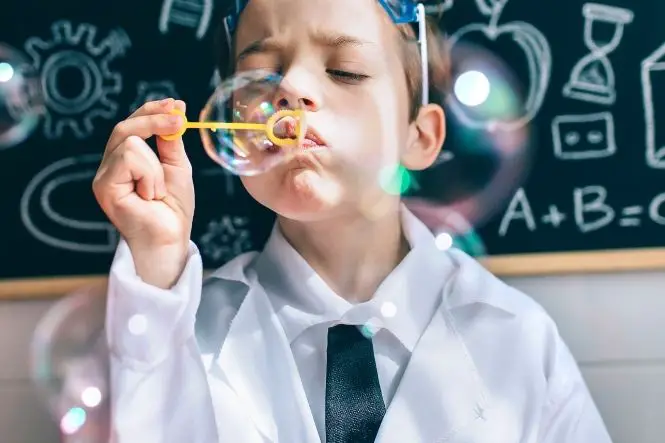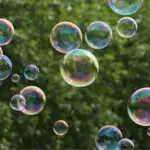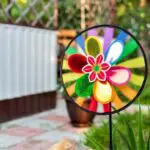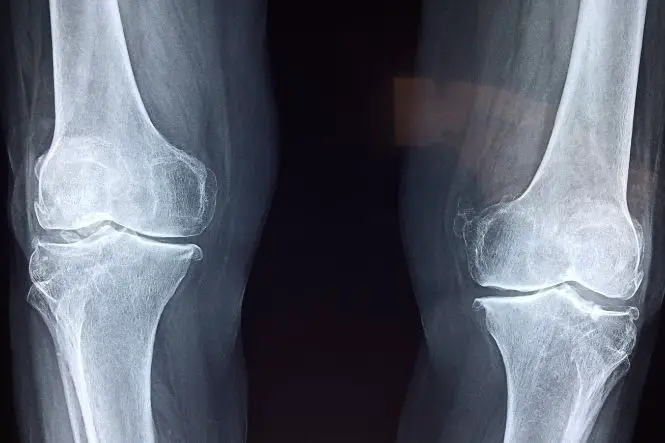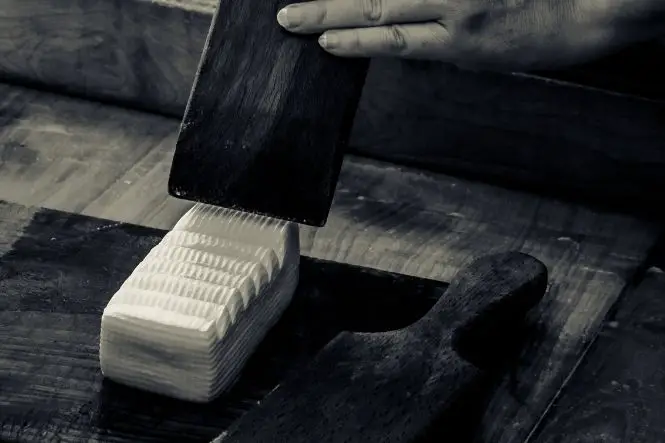Soap is made from animal fats and vegetable oils, mixed with a caustic chemical called sodium hydroxide (also known as lye). The sodium hydroxide reacts with the oil to make soap. Detergents are generally made from synthetic compounds.
Table of Contents
How Do Soaps and Detergents Work?
Washing clothes, hands or crockery and cutlery needs to remove two kinds of dirt – water-soluble dirt and greasy or oily dirt. Water on its own can dissolve some water-soluble dirt but can’t dissolve grease or oil (see ‘Why Oil and Water Don’t Mix’).
Soaps and detergents act in two ways – by making water ‘wetter’ (less likely to stick to itself and more likely to stick to the dirt), and by mixing the oil or grease into the water so it can be rinsed away.
Making Things Wet
Float a rubber band on the surface of a bowl of water. Drop a scraping of soap into the middle of the rubber band – it should pull out into a circle. Try it with a tiny drop of washing up liquid.
The water molecules on the surface of the water all attract each other strongly, creating a layer at the surface that is ‘stronger’ than the rest of the water. This is called ‘surface tension’, and is how insects like water boatmen can move over the surface of ponds. The soap or detergent reduces the surface tension, so the connections between the water molecules outside the rubber band are stronger than those inside. This pulls the rubber band outwards into the largest shape it can be – a circle.
Cut the end off a rubber band to make a U shape, float it in a bowl of water, and drop a scraping of soap into the U – this should make the ‘boat’ move forward. Try it with a tiny drop of washing up liquid.
Because the soap or detergent is reducing the surface tension inside the boat, the stronger surface tension ahead of the boat pulls it forwards.
Something that lowers the surface tension of water makes the water less likely to stick to itself and more likely to stick to other things like dirt. It is called a ‘surfactant’ or ‘wetting agent’.
Removing Oil and Grease
Soaps and detergents remove oil and grease, because the molecules have two different ends, one that likes water (hydrophilic), and the other that likes oil (hydrophobic). The hydrophobic end buries itself in the oil and grease, forming droplets of oil or grease in water surrounded by detergent molecules (an oil-in-water emulsion), which can be rinsed away.
Put some water into a bottle and pour in a little oil – the oil will float on the surface. Shake it up – the oil will mix into the water temporarily, but then separate. Add in a bit of washing up liquid and shake it up again – the oil will disperse through the water and not separate out. Try it again with laundry liquid or powder, dishwasher liquid or powder, or soap. Which is better at emulsifying the oil?
Something that makes oil and water mix is called an emulsifier (see ‘Making an Emulsion’ and ‘Ice Cream: Colloidal Chemistry’).
Laundry liquids and powders often contain other ingredients as well as detergent. These include scents, enzymes (in biological powders and liquids), optical brighteners and bleaches.
Cut three cubes of egg white, all the same size. Put one in a glass of water, the second in a glass of water with some biological laundry detergent, and the third in a glass of water with some non-biological laundry detergent. Leave for a few days – what happens?
Biological laundry powders and liquids contain enzymes to break down biological stains like food or blood. The enzymes in the biological laundry detergent break down the egg white, whereas the egg white in the water and non-biological detergent should not change.
Soap and Hard Water
Hard water is water that has forms (salts) of calcium and magnesium dissolved in it (see ‘Soft and Hard Water: Making More Bubbles’).
Put a bit of grated soap into a bottle with some hard tap water (or water with Epsom salts added), put the lid on tightly and shake the bottle. Try it again with some soft tap water (or some distilled water, or water from a dehumidifier tank), then try it again using washing up liquid (detergent) instead of the soap.
The soap will make more bubbles with the soft water than with the hard water, because it reacts with the calcium and magnesium salts to form ‘scum’, which is insoluble in water. This means there is less soap for making bubbles, or for cleaning. The calcium and magnesium salts still react with the detergent (but do not form scum), leaving less detergent for making bubbles. People in hard water areas have to use more soap and detergent than people in soft water areas.

